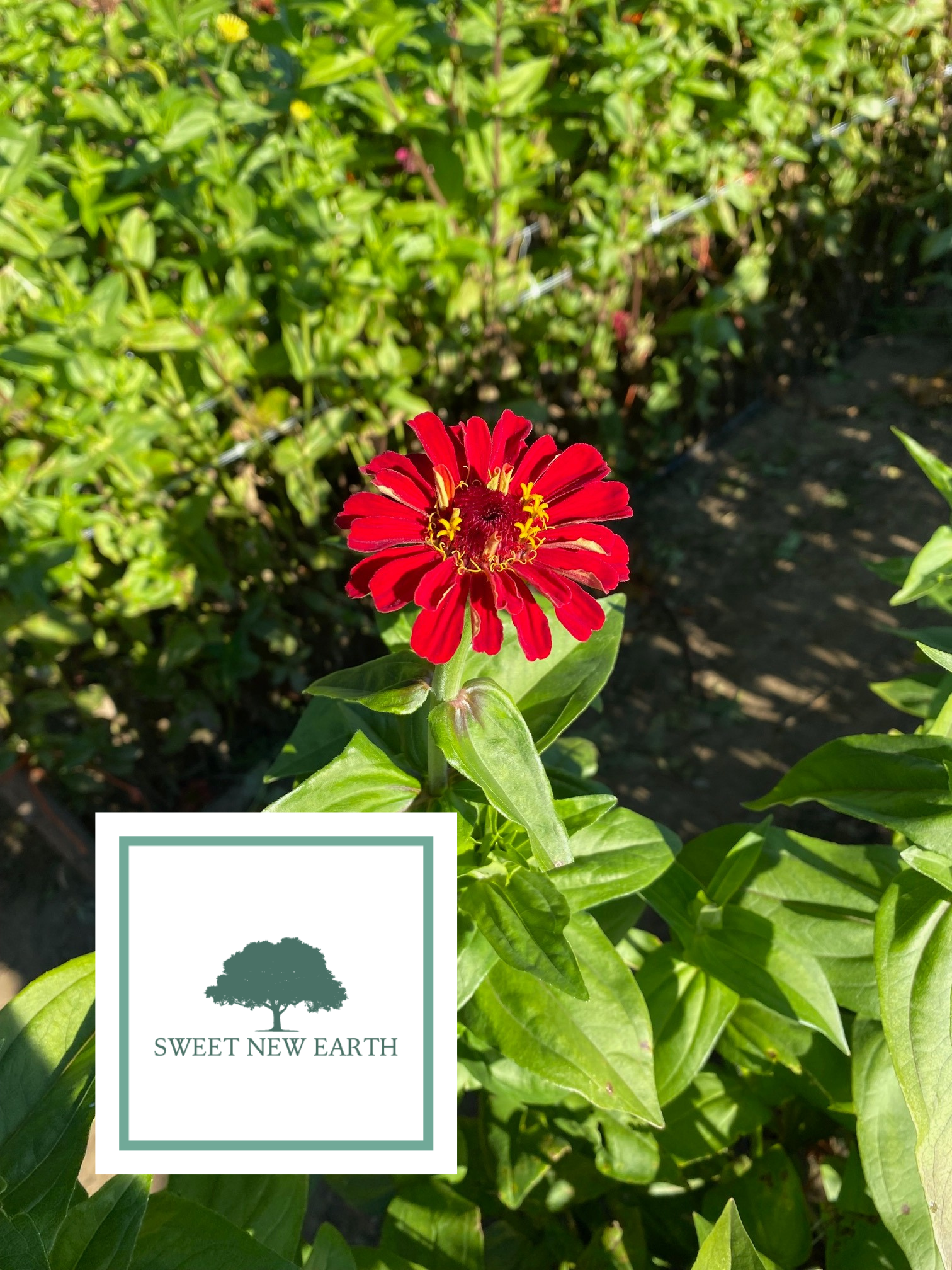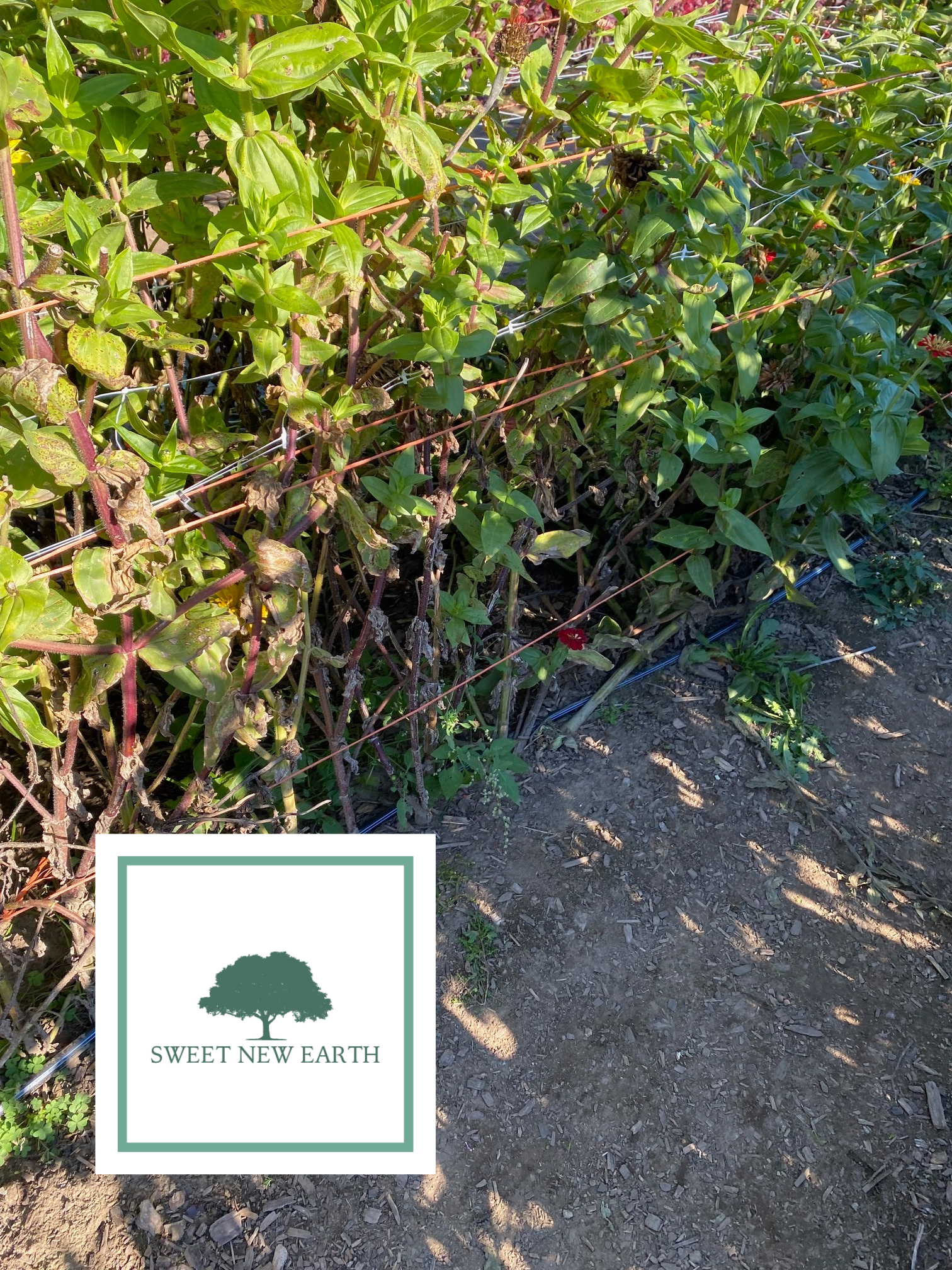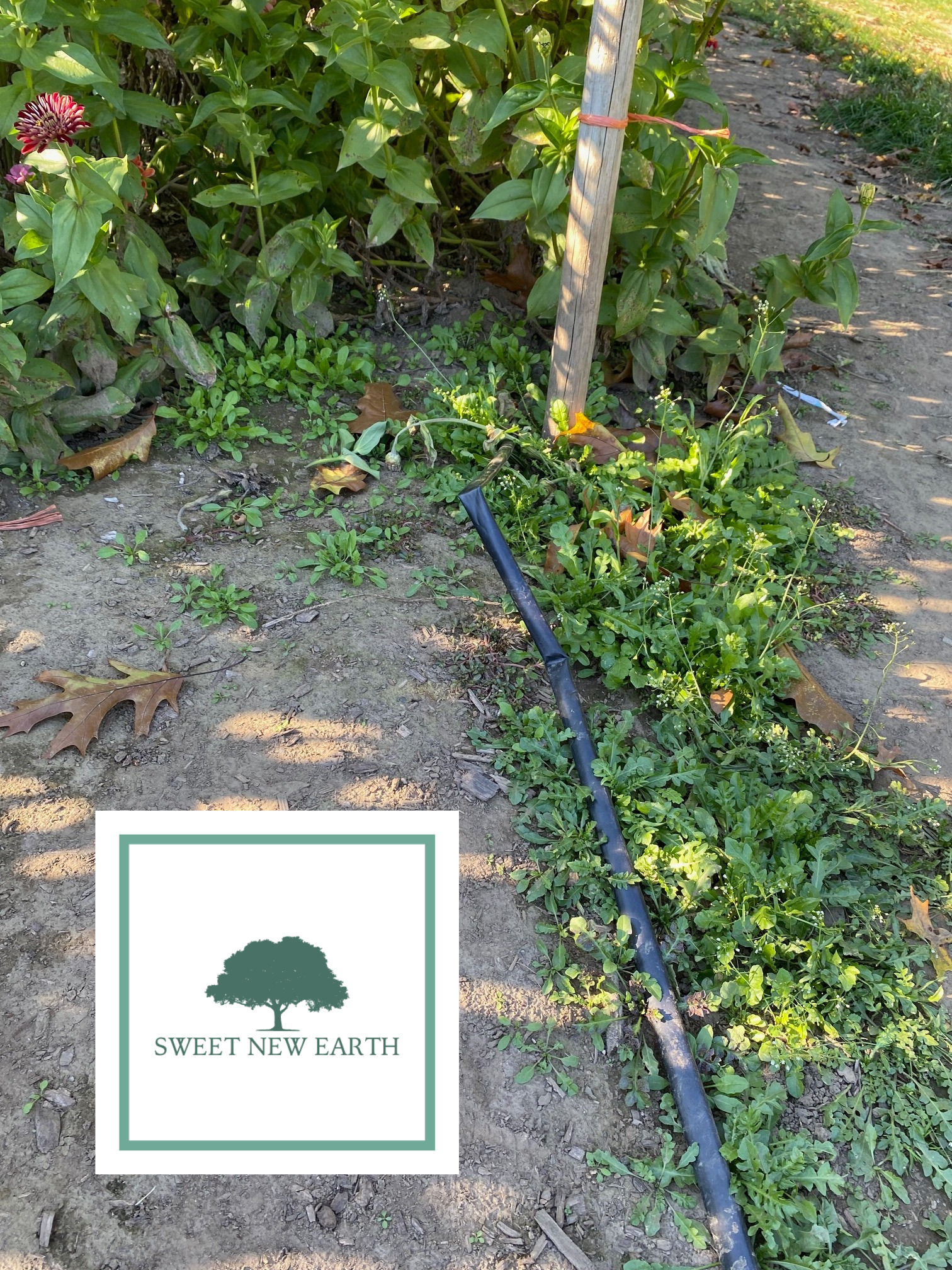What is Drip Irrigation?

Drip irrigation is a smart watering system that delivers water directly to a plant’s root zone, nice and slow. It’s way more efficient than overhead sprayers like lawn sprinklers, cutting down on water loss from evaporation.
Most folks have no clue what drip irrigation is… but we’re here to fix that. If you’re into gardening, this is something you need to know

Water is delivered through the mainline, lateral pipes, and drip tape network. The system also includes valves, filters, and other components.
Below, we look at those components as well as the pros and cons of a drip irrigation system.
Table of Contents
What Is Drip Irrigation? The Ultimate Guide
A drip irrigation system is the totality of mainline tubing, drip line tubing, drip emitters, and other connectors used to deliver the water to the plant's root system. It delivers water slowly and directly to the root zone of your plants. It conserves water, reduces soil erosion, and, above all, improves the quality of your plants.
Drip irrigation is an irrigation system that delivers water to plants slowly and steadily, directly to the root zone. It is an efficient way to conserve water and fertilizers, reduce soil erosion and improve crop production.
The slow delivery of water also helps prevent diseases caused by overwatering or runoff. Moreover, drip irrigation is 90% efficient at letting plants use water, which is especially beneficial in areas with limited water resources.
To get started with drip irrigation, you should first understand the basics of how it works. Here's a simplified overview:
- Water is pumped from a reservoir into the irrigation system, usually through flexible plastic tubing called drip lines.
- The water passes through small holes along the drip lines, slowly releasing water directly to the root zone of plants.
- The water then seeps into the soil, giving the plants a slow, steady supply of water.
You can automate this process by using timers to control when and how much water is released.
Did you know? With the drip irrigation market size expected to reach $9.37 billion by 2026 at a CAGR (Compound Annual Growth Rate) of 9.3%, it is clear that this method of irrigation is becoming increasingly popular. However, many people are still unfamiliar with or don't completely understand it.
Drip Irrigation Components
The design of a drip irrigation system is characterized by a network of pipes and emitters. The system's main components include a pipe, pressure regulator, filter, backflow preventer, valves, and emitters.
Here's what they do.

Mainline Tubing
The mainline tubing is the pipe that transports water from the source to the rest of the system. Depending on the size and scope of your project, this pipe can be constructed from different materials, such as plastic, rubber, or PVC.
Pressure Regulator
The pressure regulator reduces the water pressure from the source to a consistent and manageable pressure level suitable for drip irrigation. Thus, it ensures an even distribution of water throughout the system.
Ideally, you should use a pressure regulator when the incoming pressure is over 40 psi.
Driptape
The drip tape is a thin tape with very small, evenly spaced holes. It is used to distribute water to the plants at a low rate and pressure. It is commonly made of plastic and can be buried beneath the soil surface or laid on top of it.
Filter
The filter helps prevent debris from clogging the system and damaging the drip irrigation emitters. It is recommended that you use a filter with at least a 100-mesh rating to ensure effective filtration.
Backflow Preventer
The backflow preventer is a device that prevents water from flowing backward into the source. It is an important safety feature and is essentially a one-way valve that prevents water from returning to the source.
Valves
The valves control the flow of water through the system. They allow you to direct the water where needed and turn off parts of the system when not in use.
Soaker Dripline
The drip line is a tube with small holes punctured throughout its length. It is used to deliver water at low pressure and rate directly to the root zone of the plants.
Emitters
The emitters are tiny devices that deliver water directly to the plants. They come in a variety of sizes and shapes and can be used for different applications, such as spot watering or general irrigation. They are typically made of plastic and installed at the end of the drip tape.
Types of Drip Irrigation Systems
Before choosing a drip system for your garden or landscape, it is important to understand the four different types of systems available. These drip irrigation systems differ based on the type of delivery method used to water the plants.

Soaker Hoses
In a soaker hose system, water is delivered through a long, porous hose that is placed near the base of the plants. A timer then regulates the water flow, allowing you to set how much water your plants get and when.
A soaker hose drip irrigation system is best for:
- Gardens with shallow-rooted plants, such as vegetables and herbs
- Spaces with limited water pressure
The downside of soaker hoses is that they do not work well on slopes as they're not pressure-compensating. If you don't know how to use a soaker hose, it's a bit different from a true drip irrigation kit.
Moreover, you cannot use soaker hoses for food crops since most of them are made of recycled rubber. The rubber can also leach chemicals into the soil, which can be detrimental to your plants.
Soaker hoses are ideal for up to 200 feet. Since water flow decreases with length, you may need to use multiple hoses or shorter sections of the hose if you have a larger area.
Emitter Systems
An emitter system uses small devices installed on the water line and connected directly to each plant. These devices regulate the amount of water delivered to each individual plant.
You can choose either a gravity-fed or pressure-regulated emitter system. The former works best in flat, even terrain, while the latter works best with plants on hills or slopes.
Pre-installed drip irrigation emitter lines are also available in the market. These come in 1/2 and 3/4-inch pipes. The spacing between the emitters is typically 12 to 36 inches.
These emitters deliver half to one gallon of water per hour. Some may even deliver up to two gallons of water. It's best to opt for 2 gallons per hour for sandy soils and one gallon an hour for loam soils.
Alternatively, you can use a punch-in emitter. Punch a hole in the pipe wherever you want to place the emitter. Then, use an inlet bard to secure the tubing and the emitter in place.
Drip Tape
A drip tape is a long, flat hose with small emitters built in. The drip tape is placed next to your plants, allowing water to seep out at a consistent rate.
The drip tape system is best for:
- Large gardens or landscapes that need to be watered evenly over a wide area
- Mature gardens that need consistent, low-pressure irrigation
The wall of the drip tape is normally 0.2 mm thick. Meanwhile, it has a polyethylene plastic build, which makes it durable and resistant to damage from the sun. There is a difference between drip tape and drip line so be sure to know the difference when purchasing a kit.
Micro-Misting Systems
The main component of a micro-misting system is an adjustable water misting nozzle. These nozzles deliver a fine mist of water over the plants, which helps reduce water loss due to evaporation.
A micro-misting system is best for:
- Spaces with limited water pressure
- Gardens with shallow-rooted plants that need regular, light watering
- Efficiently irrigating large areas in a short amount of time
It is important to note that micro-misting systems require higher water pressure than other drip irrigation systems. As such, it may not be suitable for all gardens.
Micro-irrigation uses different types of devices, such as:
- Drip: A drip system typically consists of small plastic emitters placed on the lateral lines to supply water to each plant. It can be used for both above-ground and underground irrigation.
- Sprinklers: Sprinkler systems include small to large devices that distribute water in a circular or semi-circular pattern, similar to rain. It is usually used for above-ground irrigation systems. Most common being lawn sprinklers.
- Bubblers: These are also known as bubbler heads and are used for small localized irrigation. The water is dispensed in a slow, steady flow to ensure that the soil fully absorbs the water.
Drip Irrigation Pros and Cons
Drip irrigation has plenty of advantages over other irrigation systems. Here are some of them.
Pros
Saves Water
The most obvious advantage of drip irrigation is that it helps conserve water. Since individual drops are dispersed at the roots, there is no water waste through evaporation or runoff. It helps get the most out of every drop of water.
Did you know? Drip irrigation can reduce water consumption by up to 60%. Additionally, it increases the crop yield by 90%, making it an extremely economical and sustainable option.
Prevents Weeds from Taking Water And Nutrients from Plants
When there's an excess of water, it can cause weeds to grow. It deprives the plants of much-needed nutrients and water.
With drip irrigation systems, the water is released at the root level and around the plant base. Thus, it prevents weeds from stealing moisture away from the soil, allowing plants to get all the water and nutrients from the soil.
Proper Way to Prevent Disease
An abundance of unnecessary water leads to the following plant diseases:
- Anthracnose
- Leaf steak
- Powdery mildew
- Rust diseases
Drip irrigation helps prevent these diseases. Instead of wetting the entire foliage, it only moistens the roots and lower parts of the plants. It allows for better air circulation around the plants, which helps reduce the chances of diseases.
Since water is delivered directly to the roots, it helps aerate the soil. This is beneficial for plant growth, as aerated soil helps create an optimal environment for root development.
Easily Adaptable
Drip systems are customizable and can be adjusted to meet the needs of specific plants. For example, by adjusting the nozzle size, water delivery rate, and irrigation frequency, you can create the perfect environment for certain plants. Plus, they are easy to take care of and maintain.
Cons
Drip irrigation has plenty of advantages over other irrigation systems. Here are some of them.
Winterize
When winter approaches, you must take special care to winterize the drip system. If not done properly, the lines may freeze and burst when temperatures drop. Not only that, but you can really damage your drip tape fittings too which could make spring gardening a hassle.
Clogs
A drip system uses narrow tubing and drip emitters, making it difficult to clean out should a clog occur. If there is an obstruction in the system, you will need to have a professional come in and inspect the system.
Complicated Installation and Maintenance
Since drip systems involve a lot of intricate components, they can be difficult to install. Furthermore, regular maintenance is essential for keeping the system in proper working order.
The lack of flexibility is another disadvantage to using a drip irrigation system. If you make any changes to your landscape or want to add plants, you will need to modify the system for it to be effective.
For instance, if you use drip tape, you will need to buy new tape for every change. It can be time-consuming and expensive. If you want to install drip irrigation be prepared to make both an initial time and money investment.
Cost
Installing a drip irrigation system can cost up to $4.50 per square foot. That equals $300 to $1,200 per zone and $500 to $4,000 per acre. It is more expensive than other irrigation systems, such as a traditional sprinkler system.
Additionally, the cost of replacement parts can add up over time. For instance, you may need to buy new emitters or filters if they become clogged.
FAQs
Thank you for stopping. This is the first installment of our drip irrigation series. Follow along to get the best drip irrigation system advice and information.

Carl Anderson
Carl Anderson is an avid outdoorsman with a keen interest in writing about and reviewing tools. He has over 20 years of writing experience and the only time he isn't feverishly typing away at his computer is when he's outside in nature working on his projects. You can learn more about him here.
Join our community!
Join to receive guides, insights, and the latest gardening deals!
